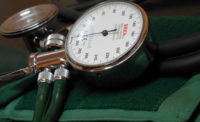Visit any emergency department in the United States and you may find individuals who were injured or who became ill on the job. In 2013 alone, an estimated 2.7 million workers received treatment in emergency departments for nonfatal work-related injuries and illnesses. Although work-related deaths may receive more media attention, nonfatal injuries and illnesses take a toll on workers’ health and quality of life and often contribute to missed workdays and decreased productivity.
Preventing nonfatal work-related injuries and illnesses requires accurate identification of cases so that risk factors can be determined and future injuries and illnesses prevented. However, a single comprehensive source of data for work-related injuries and illnesses does not exist. Currently, there are two main sources of national nonfatal occupational injury and illness data: the Bureau of Labor Statistics’ (BLS) annual Survey of Occupational Injuries and Illnesses (SOII) and the National Institute for Occupational Safety and Health’s (NIOSH) occupational supplement to the National Electronic Injury Surveillance System (NEISS-Work).
The BLS SOII—the only national employer-based surveillance system for nonfatal occupational injuries and illnesses—captures injuries and illnesses from the Occupational Safety and Health Administration (OSHA) logs from private industry employers and state and local government agencies. It is important to note, though, that certain types of workers, such as self-employed workers, are not covered under OSHA recordkeeping guidelines. The second source, NEISS-Work, captures nonfatal occupational injuries and illnesses treated in a sample of hospital emergency departments. Because NEISS-Work is not limited by industry type or recordkeeping guidelines, the system addresses some of the challenges created by an employer-based system by capturing cases identified by workers or their healthcare providers. Yet, NEISS-Work is not able to capture all work-related injuries and illnesses since workers may seek and receive treatment in medical venues other than an emergency department. Additionally, workers may not identify their injury or illness as work-related to emergency department staff, or emergency department staff may not document an injury or illness as work-related in the medical chart.
Studies and reports have raised concerns about underreporting of injury and illness to avoid safety inspections, to maintain low workers’ compensation costs, or due to misunderstandings about reporting guidelines. Based on these concerns, in 2009, Congress directed OSHA, BLS, and NIOSH to study the effectiveness of current nonfatal occupational injury and illness surveillance systems. In response to this congressionally funded directive, NIOSH assessed NEISS-Work for potential underreporting among workers. To do this, NIOSH researchers conducted follow-back telephone interviews with injured or ill workers identified in NEISS-Work to assess whether they reported their injury or illness to their employer, their reasons for reporting, and characteristics of their employment and workplace environment. In addition to assessing underreporting, Congress directed NIOSH to collect information on self-employed workers, a population not generally captured in other systems. This study resulted in three publications that recently appeared in the American Journal of Industrial Medicine. Key findings from the congressionally funded study are highlighted below.
Injury reporting among English-speaking workers
To assess how many English-speaking workers reported their injuries and illnesses to their employers, NIOSH researchers analyzed more than 2,000 worker follow-back interviews, which were completed in English. Findings revealed that nearly all of the participants either reported their work-related injury or illness to their employer or were self-employed. A majority of workers that were not self-employed indicated they received instructions from their employer regarding whom to tell if they were injured.
Injury reporting among Hispanic workers
Because research suggests that Hispanic workers underreport injuries and illnesses to their employer, NIOSH conducted follow-back interviews separately for Spanish-speaking workers, most of whom identified as being of Hispanic ethnicity. As the largest group of minority workers in the country, Hispanic workers suffer a disproportionately higher share of occupational injuries and illnesses than other workers. The reasons for this disparity are complex but include the fact that Hispanic workers tend to be employed in low-paying jobs and in high-risk industries such as agriculture, construction, manufacturing, and transportation. Other contributing factors are level of language proficiency, residency status, and level of education.
NIOSH researchers found that most Hispanic workers treated for an injury or illness in an emergency department either reported their injury to their employer or were self-employed. Further, the majority of Hispanic workers reported receiving instructions from their employer regarding whom to tell if they were injured at work. Less than half reported being familiar with workers’ compensation, and even fewer expected workers’ compensation to pay for their medical bills. Instead, they expected, for the most part, that the employer would pay for their medical expenses.
What did we learn?
Among nearly all of the study participants who were treated in emergency departments for a work-related injury or illness, respondents did not appear to underreport job-related injuries and illnesses to their employers, whether the workers spoke English or Spanish. However, a complex series of events must occur to ensure that occupational injuries and illnesses are successfully documented. Assessing reporting based on cases captured in emergency department records is only one step in the documentation process. There are several steps in the process that we did not assess, including whether all work-related injuries and illnesses were identified during emergency department treatment and whether the reported injuries and illnesses were recorded on the OSHA logs or reported in SOII. Based on these findings, NIOSH researchers concluded that NEISS-Work and emergency department records, in general, are limited in their utility to thoroughly understand why work-related injuries and illnesses are underreported and the extent to which this occurs. Future research to assess underreporting among workers should consider using a data source not restricted to workers with occupational injuries or illnesses identified in medical records.
More information is available:
Characterizing Emergency Department Patients Who Reported Work-Related Injuries and Illnesses
Source: NIOSH



